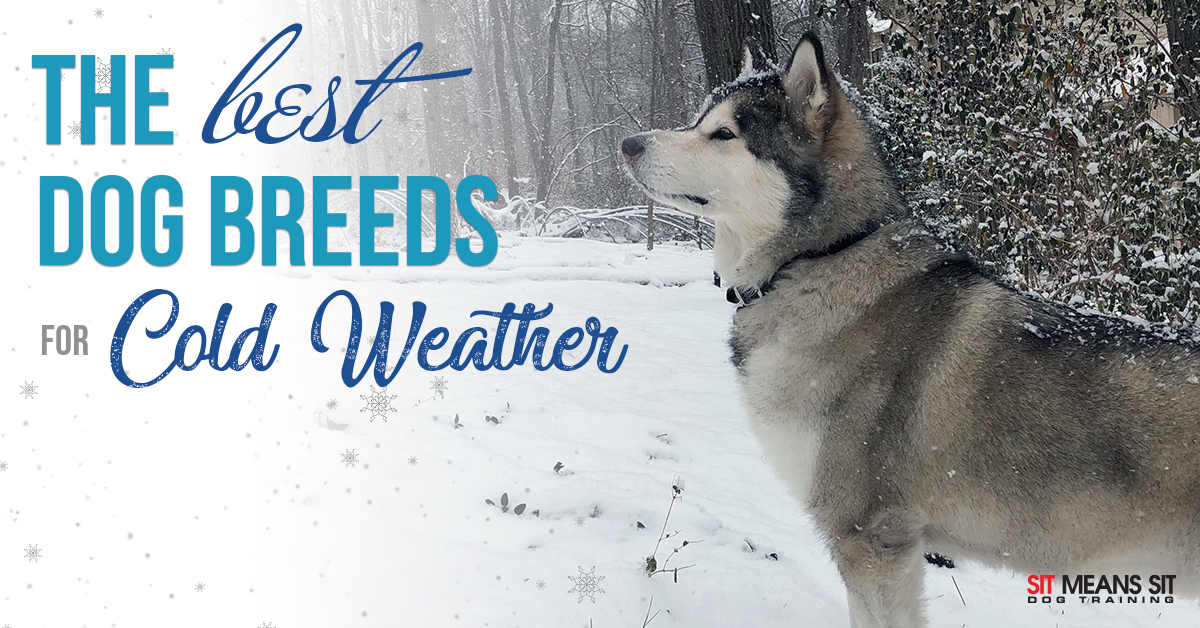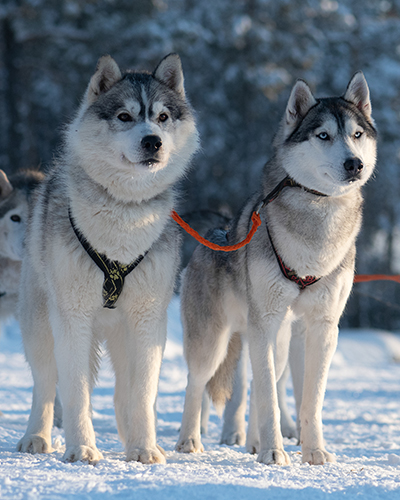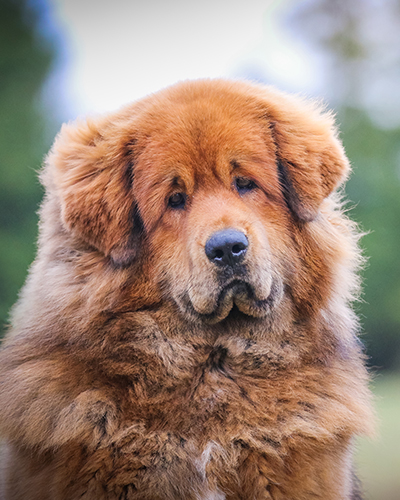
Best Dog Breeds for Cold Weather
There are a lot of things to think about when picking a dog. Size, age, temperament, and energy level are all important considerations before bringing home a new furry friend. It’s also important to think about the climate you live in, especially if you live in an area with extreme highs or lows.
With winter upon us, we are going to focus on cold weather breeds that will keep you warm and cozy all winter long!

Siberian Husky
Nothing says cold weather dog more than the Siberian Husky. These compact sled dogs were bred for speed and endurance and can pull light to moderate loads over vast expanses in subzero temperatures.
These dogs gained national recognition in 1925 when an epidemic broke out in the small remote town of Nome, Alaska. 150 sled dogs carried the lifesaving diphtheria serum across 674 miles in 5 days. One Siberian named Togo covered the longest stretch of the journey, which was 260 miles! The annual Iditarod Trail Sled Dog Race commemorates the race to deliver the vaccine to Nome.
Siberians are athletic dogs that need plenty of exercise and are happiest when put to work. Since these dogs were bred to run, they should ALWAYS be kept on leash or in a fenced yard.

Great Pyrenees
The Great Pyrenees is a gentle giant, originally bred to deter sheep-stealing wolves in the snowy mountains of Spain and France. Their patience is unmatched, sometimes having to sit for days on end in the cold to watch the herd.
Today, the Great Pyrenees makes a great family dog. They are not as active as the Siberian Husky and only require a moderate amount of exercise. That said, they were bred to be independent thinkers and require a significant amount of training to become the perfect well-mannered companion.

Tibetan Mastiff
Is that a dog or a bear? Originally known as the mighty guardian of the Himalayas, the Tibetan Mastiff is one of the oldest dog breeds dating back to 1100 B.C. in China.
They are intelligent and loyal with their family but can be extremely protective. These dogs require consistent and early training to make a well-mannered pet.
Don’t skimp on the exercise! The Tibetan Mastiff gets bored easily, which can lead to destructive behavior.

Alaskan Malamute
Sometimes confused for their smaller cousin the Siberian Husky, the Alaskan Malamute is much larger and bulkier in appearance. They migrated into North America roughly 4,000 years ago and are considered one of the oldest Sled dog breeds. While the Siberian Husky was bred to pull lighter cargo for long periods, the Malamute is used for carrying heavy freight loads over a short distance.
Mals are stubborn and will challenge for top position in the household. Proper training is required for both dog and human to ensure all family members are not pushed around. A well-behaved Malamute can make a great companion with their gentle, playful, and friendly temperament.

Saint Bernard
The powerful Saint Bernard was originally bred as a search and rescue dog for lost travelers in the snowy Alps. In popular media these dogs are sometimes seen with a barrel of brandy around their neck, which is said to be used by stranded avalanche victims to keep warm while awaiting rescue.
They are known for being patient, watchful, and gentle with children. As with any large dog breed they require early socialization and obedience.
Common Features of Cold Weather Breeds
Let’s go over some of the features that allow these dogs to withstand some of the coldest climates!
Double Coats
Most cold weather dog breeds have double coats. This means that they actually have two layers of fur; an outercoat and an undercoat. The undercoat serves as extra insulation and is often soft, dense, and woolly, while the outercoat is coarse and weatherproof.
A double coated dog will typically “blow” its coat 1-2 times per year. This means they shed their woolly undercoat in response to the changing seasons. During this time it might look like your dog’s fur is molting, and your house will likely look like a snow globe of dog hair.
The best way to speed up this process is by brushing with a grooming rake or using a high quality grooming blow dryer. A double coated dog should NEVER be shaved because the undercoat also protects against heat.
Paws and Claws
Many cold weather breeds have large, extra hairy paws to help keep them warm. Some also have super webbed feet that are used to grip onto snow and ice in extreme weather conditions and harsh terrain.
